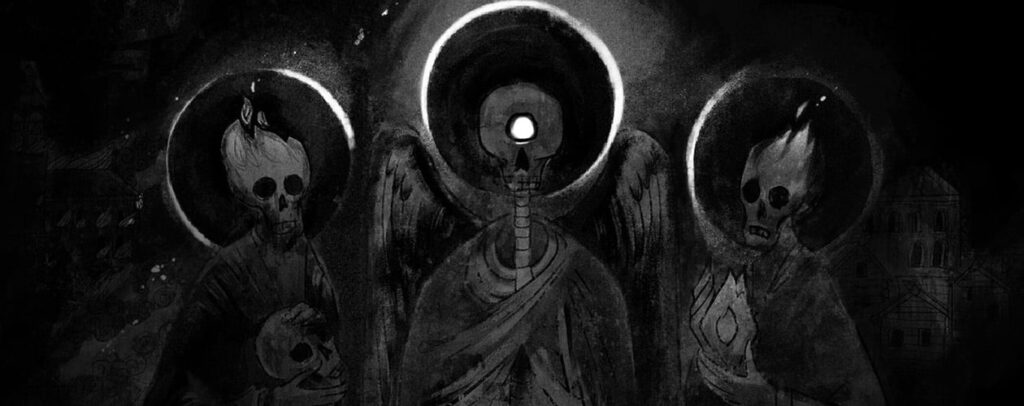Horror comes in many different flavours, with Folk Horror being particularly popular in recent years. Defined by a connection with and threat from the land beneath our feet and the beliefs that surround our involvement with it, this form of horror can offer fascinating insights into different cultures. Such is the case with One-Eyed Likho, a dark first person adventure based on a Slavic fairy tale. According to the tale, Likho is the embodiment of misfortune, a one-eyed ogress who haunts the margins of nightmares. Unfortunately for you, the protagonist of the game, you must track her down and find a way to escape her baleful eye.
Likho is a window into another time and another culture. The 19th century Russian setting is one that was unfamiliar to me but also one that fits the eerie monochrome aesthetic perfectly. The lack of colour throughout the game gives the whole atmosphere the feel of a classic film, a mood only furthered by the Russian dialog. This combination of visuals and narrative reminded me greatly of 2021’s Mundaun, another folk horror game with a unique European setting.
While the black and white visuals seem limiting at first, the skilful use of light and shade throughout the game make details really pop in a way that they wouldn’t in full colour. The mixture of religious iconography and horror staples such as caves and dungeons creates a constant feeling of claustrophobia and there are some terrifying chase sequences that make full use of this tone.

You play as a smith who foolishly agrees to leave the safety of society to search for his fortune in the Mysterious Forest. Accompanied by a tailor, you soon find yourself embroiled in a nightmarish world of darkness and madness. The tailor seemingly dies at Likho’s hands early on but manages to remain a conscious companion in a freakish new form, the details of which I won’t spoil here. The original tale of Likho revolves around a smith blinding the ogress in order to escape her and one of the most memorable aspects of the game is the way in which it highlights the uncanny repetition found throughout folk stories from different cultures.
Early on in the game you find a strange book that at first appears to be empty. Scattered throughout the various locations are puzzle boxes that hold extra pages for this book – pages that contain a range of stories from across the world that all seem to contain the same basic elements of Likho. The most famous of these is, of course, the tale of Odysseus and the Cyclops and those who are familiar with this version will find some clear overlaps with the events depicted in Likho.
While there is no combat in Likho, you are not completely helpless in your adventure. Equipped with a seemingly bottomless box of matches you’ll frequently find the need to burn dry grass, wooden effigies and other obstacles to progress. This mechanic is your primary way of interacting with the world, but it’s not always about destruction. Lighting your path is often essential with many pitch black areas whilst other times puzzles require you to use light to your advantage.
The puzzles in Likho are mostly environmentally based with statues needing to be moved, keys found, and riddles to be solved. Alongside the main narrative path, there are the aforementioned storybook pages to be found, as well as birch manuscripts that give deeper lore details into the world of the story, and collectable dolls to burn hidden around the various locations. Trying to collect all of these provides some replayability which is welcome as the main story only takes around 4 hours to complete.
